Hurricane Katrina had no favorites. She picked equally on the weak and the strong, black and white. She stomped on the rich and the poor and she stopped life in its tracks. Imagine life with all your possessions in the front yard or in the gutters. Worse yet, imagine you have no possessions, no house. Imagine searching for your friends, your family or your pet weeks after they disappeared.
Yes, just imagine!
This is the reality for thousands who have made their way back to the Big Easy to rebuild. Thousands more perished. many will never be found. Others will use this catastrophe as an opportunity to start fresh in another state, but the memories will last forever: the memories of buses that never arrived to evacuate the city’s most vulnerable residents, the memories of rescue teams arriving too late to save lives, politicians playing games while New Orleans drowned, and the memories of body bags lining the streets. The calamity continues as much of the city lays in wait. Will neighborhoods be rebuilt or turned into investment opportunities for the fortunate few who have the right political connections?
The images accompanying this article were captured while on a photo excursion with a fellow photographer from London, England during the last three days of 2005. What made this trip particular significant was that many of his relatives had been living in New Orleans before Katrina struck. The whereabouts of some of them was still unknown at the time of our visit.
The majority of the digital images were taken in those areas of New Orleans most impacted by the devastating floodwaters of Lake Pontchartrain when it breached protective levies, leaving 80% of the city submerged and 100,000 people stranded in a city under siege by natural disaster and bureaucratic bungling. Once the six metres of water that inundated the city had receded, there was a much different Big Easy.
New Orleans sites in a wide, shallow bowl, with the levees of Lake Pontchartrain as one rim and the levees of the Mississippi forming the other. Much of the city’s main business district, including the famous French Quarter, is built on the highest ground in the city, which meant minimal flood damage. The majority of the city wasn’t as luck we would soon discover.
Nothing either of us had seen on television or previously witnessed on our travels could have prepared us for what we saw in New Orleans. It was such an eerie feeling to be walking and driving through neighbourhood after neighbourhood and not see a living soul. No animals, no people, no birds. Just the rank smell of mould and rotting vegetation, and silence broken only by the noise of the car engine.
It was an extremely moving experience to be among the ghosts of New Orleans and be able to to capture the images of what remained. From the empty wheelchair sitting on the street corner to the buildings spray painted with rescue worker alerts, the expressions of disgust towards FEMA and the unexpected silence, this was not the New Orleans either of us remembered from previous trips. It is certainly a New Orleans we won’t soon forget.
Occasionally we would come upon someone crouched down on the sidewalk sifting through what few possessions they had been able to salvage. For many, the waters carried decades of memories out window and door openings leaving little but chaos and mayhem between the rotting wallboards. Buildings crumbled completely or were moved off their foundations. Children’s toys, wide-screen televisions, water logged mattresses; garden furniture, clothing, photographs and kitchen sinks were strewn randomly. In other neighbourhoods, where residents were affluent enough to start repairing their homes, possessions were often pile neatly in the ditches waiting for debris removal crews to arrive.
We were both torn between tremendous sadness for the thousands whose lives had been destroyed and tremendous outrage at those in power who let this calamity happen. Why had funds for storm preparation and flood control been cut? Why had it taken days for rescue workers to be organized into disaster response teams? Why were FEMA emergency-housing trailers still sitting in marshalling yards rather than on residential lots? Why were managers with no direct emergency preparedness experience in charge of the rescue operation? Why had authorities repeatedly ignored the hurricane warnings from the scientific community? Even though Katrina was forewarned and foreseen, the gravity of her arrival was dismissed until it was too late.
During the three days that we were in New Orleans we had opportunity to speak to a number of locals, all of whom had vacated the city during Katrina but had returned to try and put together the pieces of their lives. The more we drove around and spoke with people, the more frustrated we became. How could 80% of one of America’s greatest cities be eradicated in a few short hours? How could so many support systems let down so many people? Where were the people charged with rebuilding this once incredible city?
Russell, long retired and in failing health, had done his best to save his elderly neighbours by inviting them to gather on the second floor of his rental apartment building as they waited for rescuers. When the rescuers failed to materialize, Russell commandeered a boat the found in a neighbour’s back yard. The engine failed to start but that didn’t deter Russell who improvised with two wooden fence rails and rowed his neighbors 1.8 miles to the Louisiana Superdome. Three months later, Russell is still waiting for the electricity to be turned on at his house that he gutted once the 8 feet of water subsided from his street. He has yet to see an electric utility serviceman and has been waiting three months for word from FEMA as to whether, he and his daughter, will be granted FEMA trailers to live in until renovations can occur to their homes. And while the Mayor is urging his residents to return to New Orleans, there are few places for them to return to and few services to support them. yet here is poor Russell, getting zero cooperation from the city bureaucrats, in possession of two buildings that with a little electricity to power his carpenter tools could easily be repaired and turned into living quarters for four to five returning families.
During his time at the Superdome, Russell claims that he was treated extremely poorly and it wasn’t until he was evacuated to Texas that the received humane treatment. Staff there were able to reunite him with this daughter and provide him with basic necessities.
The mere mention of the word FEMA to the people we spoke with brought out the worst of comments. It is an understatement that the FEMA, the city of New Orleans, the State of Louisiana and the federal government of the United States have let these people down in the worst way.
Kappa, the owner/operator of Slim Goodies Diner on Magazine Street, has taken the entire event in stride. Magazine Street, west of downtown New Orleans, enjoys a site on higher ground and was spared much of the wrath of Katrina. Slim Goodies was closed only three weeks and is in the zip code that was first to be recalled by Mayor Nagin. “The rotting food and the flies were terrible. The smell was really something,” says Kappa, “but a few bottles of disinfectant cleaner later we were open for business offering beer and bottled water from an ice chest, burgers and homemade pies.” That first day she served over 300 people including members of the FBI and the local police force who came around to escort her out of the area each night after she closed. Seventeen of her staff have not returned to New Orleans so she improvises by putting customers to work. Much of the food and drink during the early days were given out for free. The building’s landlord also extended Kappa free rent until she can get established again.
The morning we were there it was standing room only as people chowed down on good old fashioned breakfasts. The “Katrina Combo,” the “Repopulation Basic Egger” including grits, biscuit and Joe (coffee), “Contractors Breakfast” – a manly-man’s breakfast, and “Waffleopulous” big waffles (as big as your head). No point in losing your sense of humour at a time like this. Her handwritten and photocopied menu reads: “Thanks for sticking with us. This is our post-Katrina/Rita menu. Some of the names have changed and we scaled back a little bit, but we’re trying. We lost a lot of our staff so please be patient with our newcomers.”
Upon returning to the city, Eric, who weathered Katrina from Cleveland (Ohio), was very pleased to see that his building experienced only minimal wind damage. Before Katrina, he and his band were ready to cut their first music CD. His band members are now scattered throughout various states and he is contemplating his musical future. Does he rebuild his band? Does he give up his hopes for a CD release? He now houses friends who weren’t as lucky. “It’s a little weird being 38 and having roommates again,” he declared.
While we were bellied up to the bar enjoying breakfast and chatting, he told us that many who were spared much damage are suffering “survivor guilt” and trying to reconcile why they were saved from disaster. A rather futile effort but, nonetheless, it continues to occur.
Following our Slim Goodies breakfast and conversation with locals, we ran into Martin. He was plucked from the roof of his house by a sympathetic rescue pilot who let Martin smuggle his dog onboard the chopper. Martin left New Orleans with his dog and a small backpack of possessions and returned in mid-December to start his life over again.
Our conclusion: people are very made at every government agency you can mention but they still haven’t had their spirit broken. It may be storm-damaged but it ain’t broke.
Hotels downtown have lost many of their staff members. Some hotels are providing accommodations for their own staff within the properties. Housekeeping and customer services are on a greatly decreased level, which one could expect. We stayed at the Holiday Inn Superdome and were in no way impacted negatively by the decrease in service. Staff was upbeat, friendly, helpful and appreciative of the fact we were there in their city and at their hotel property helping to revive the city’s devastated economy.
There was a strange new feeling in the air throughout the downtown area of New Orleans, one where merchants and vendors genuinely appeared pleased to have tourists in their midst. Strangers on the streets made eye contact and said hello, so unlike the New Orleans of visits past. But this feeling pales rapidly outside the city centre where life is anything but normal for the thousands who continue to struggle.
It appears as though most of the outside world has forgotten about Katrina, New Orleans and the hundreds of thousands of gulf coast residents whose lives have changed so drastically since September 2005. George Bush has a new war to wage. Those responsible for the Katrina debacle will probably never be brought to justice. And life goes on as the ghosts walk the neighbourhoods of the Big Easy.
Author Bio
Kent Waddington is a freelance writer and photographer
Kent Waddington

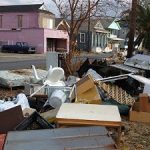
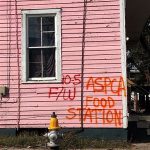
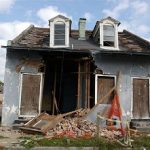
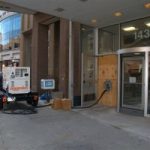
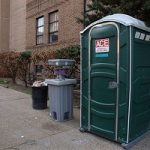
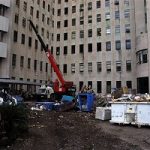
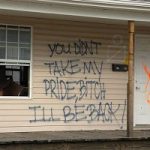


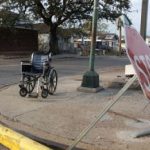
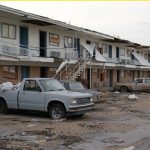

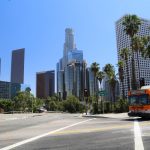
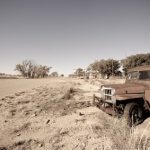

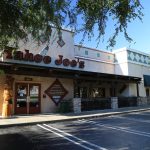
Leave a Reply